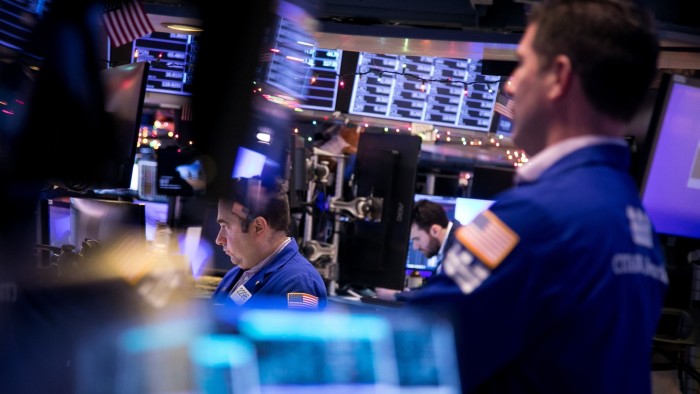The T+1 train will soon hit markets

Roula Khalaf, Editor of the FT, selects her favourite stories in this weekly newsletter.
The writer is former chief executive of Principal Asset Management, the US-based asset manager
A big change is coming early this year in the way US markets operate, with a shift to a shorter settlement cycle for trades in stocks, bonds and exchange traded funds. Most US settlements will move from T+2, or two business days after the trade is agreed, to T+1.
This is very important for the future health of markets and a step long sought after by regulators, lowering trading costs and making the settlement of trades much more efficient and reliable.
The change should roughly halve the outstanding volume of executed but not settled trades, and so make a big reduction in counterparty risk. In the longer term, it offers the opportunity to modernise and digitise the settlement processes.
The shift to T+1 will involve quite a lot of work for US market participants. Accounting systems will need to change and will need to operate more rapidly to minimise trade failures, which can be very costly to remedy.
Stock exchanges around the world have been developing their T+1 strategy in response. But European exchanges are so far less prepared for T+1 than others and they will still be operating on T+2 settlement cycles when the US move comes.
Asset managers have warned of a “major and serious risk” to European capital markets if local regulators do not follow the US lead. In general, markets that don’t offer T+1 should be expected to see declining liquidity and to lose out to any competitors who can trade the same securities with such a settlement.
This is because global portfolios are mostly managed in dollars. So switches from European equities to the US will need short-term financing of trades to cover the longer settlement cycle. Meanwhile, switches from US equities to Europe will generate short-term money balances as American trades are settled more quickly, needing placement.
In London the choice has sometimes been framed as either go with the US and T+1, or with Europe and T+2. Indeed, if London, or another European exchange, were now to go to T+1, that could be a way to pick up significant market share.
However, I suggest over time all exchanges globally are headed towards T+0. If a reduction in the settlement cycle reduces risk, then why not eliminate counterparty risk completely by moving to T+0? One issue would be that netting — the offsetting of trades — sharply reduces the need for capital to support trading. If all settlement became instantaneous, then netting would be impossible, reducing liquidity in markets.
Also, instantaneous settlement would be likely to cause a big increase in failed trades, unless market technology infrastructure was at the same time improved. But T+0 could mean same-day settlement rather than instantaneous. Netting could be at the end of the day or multiple times a day and leading to settlement at the close of trading or after each netting. I suggest T+0 will come eventually, but that may be a decade or more away.
The need to demonstrate capability to fund trades in T+0 probably dictates that systems will need to share data using distributed ledger technology, or blockchains. I am surprised so far to have seen only relatively small experiments with blockchain in settlement.
This use of technology will make a big difference to what is possible for the settlement system. As an aside, blockchain technology could also enable a big reduction in the costs of reconciliation — checking trades are verified — incurred by asset owners, asset managers, registrar and custody banks.
The term “atomic settlement” is often used among trading and technology people. The expression started in crypto, but has developed quite a specific meaning in securities. It implies settlement that is simultaneous and instantaneous. As described here, simultaneous settlement is very important and positive for the global investor. But the need for netting makes instantaneous trade settlement very unlikely. T+0 would also need substantial technology development.
Will the change to T+1 be cost justified? It’s hard to say, but like many risk reductions it is being mandated by the regulators.
T+1 has been much discussed among traders and technology people, but has not yet apparently received much attention from the top executives in most asset owners and asset managers. But this is an important shift that has both risks and opportunities. Over the next six months it will need an increased strategic focus.
Comments